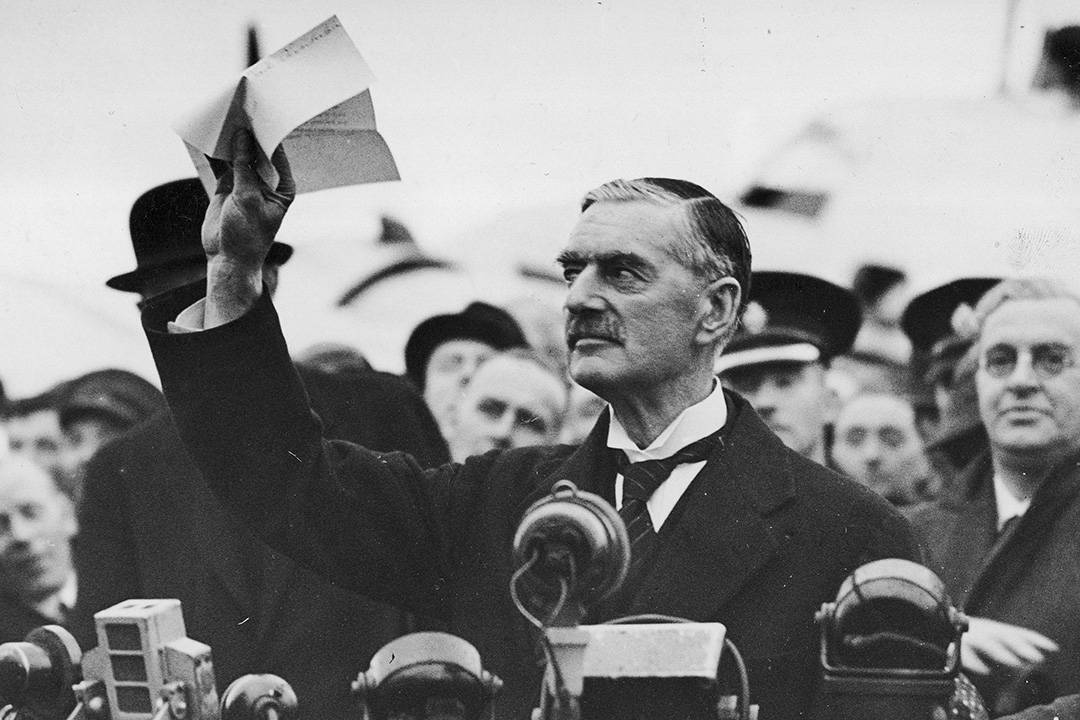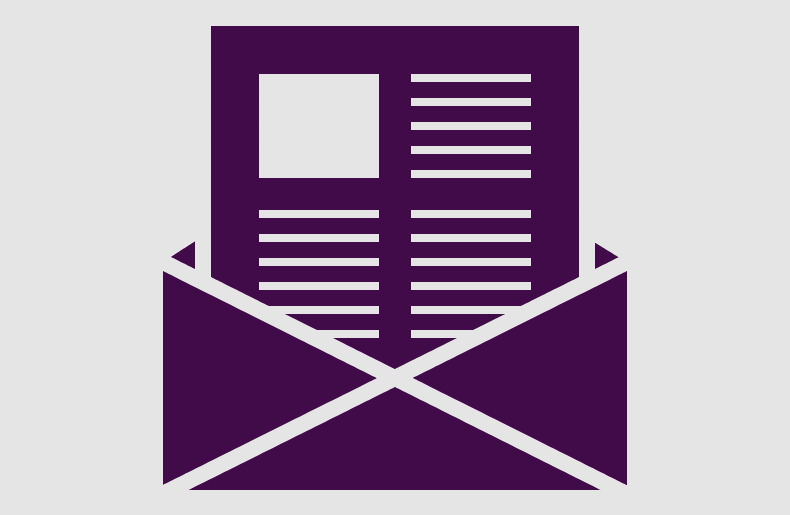President Donald Trump’s 28-point peace plan for Ukraine could have been written less by a well-meaning Chamberlain than Vladimir Putin himself. But progress in talks in Geneva and the European re-write offers some hope.
Donald Trump is having a Chamberlain moment.
In September 1938, Neville Chamberlain returned from Munich with a ‘scrap of paper’ signed by both the British Prime Minister and Adolf Hitler following the Munich Agreement.
The arrangement was supposed to symbolise their desire to avoid war with each other, staving off conflict by permitting Nazi Germany to annex the Sudetenland, a German-speaking region of Czechoslovakia. Waving the document from 10 Downing Street on his return, Chamberlain declared he had secured ‘peace for our time,’ a statement that was to become infamous as Germany invaded Poland less than a year later, marking the start of the Second World War.
On the face of it, President Donald Trump’s 28-point peace plan for Ukraine could have been written less by a well-meaning Chamberlain than Vladimir Putin himself.
There are some reasonable bits. The proposal, reportedly drafted in consultation with Russian envoy Kirill Dmitriev by US special envoy Steve Witkoff with input from Secretary of State Marco Rubio and Trump's son-in-law Jared Kushner, states that ‘Ukraine's sovereignty will be confirmed’ and ‘Russia will enshrine in law its policy of non-aggression towards Europe and Ukraine’. It states there would be a ‘decisive coordinated military response’ in the event of further Russian incursions onto Ukrainian territory. However, it does not specify what role the United States would play in such a response and what the threshold would be to trigger this.
The plan also includes economic components that would see some frozen Russian assets go toward rebuilding Ukraine, sanctions on Russia lifted and Russia returning to the G8 as part of its reintegration with the global economy.
But some bits would be suicide for the Ukrainians to agree to, and some aspects that turn the Europeans into American supplicants.
Under the terms of this proposal, Ukraine would effectively give Moscow the keys to Kyiv by giving up the strategically vital areas around Kramatorsk in the Donbas, cutting the size of its army by around 30% and foregoing its long-range weapons. They do not make the same demands of Russia, and together with the end of sanctions, are an invitation to another round of war.
All parties would receive amnesty for their actions during the war, removing the threat of war-crimes trials. Ukraine is also expected to hold elections within 100 days of a deal – an invitation for Russian meddling if ever there was one, along with administrative bedlam, not least given around ten million Ukrainians have been uprooted by the war.
But it is on NATO – long a bugbear of Putin, not least since membership is voluntary, unlike his preferred method of association – where things go from weird to scornful.
Unlike Chamberlain, who may have bought just enough time for Britain to prepare adequately to stave off Hitler’s war machine, there appears no such logic driving Trump. His mercantilism flies in the face of the human cost of this war.
Point 4 of the plan states that ‘A dialogue will be held between Russia and NATO, mediated by the United States, to resolve all security issues and create conditions for de-escalation to ensure global security and increase opportunities for co-operation and future economic development.’ Yet the US is a founder member of NATO, and not an independent actor.
This detail is also ignored in the guarantees that are to be signed by the US and NATO, among others, since their implementation would be directed by the president of the United States ‘in consultations with Ukraine, NATO, and European partners.’ NATO members are also expected to ‘affirm that Ukraine’s security is integral to European stability and commit to act in concert with the United States in responding to any qualifying violation.’
Europe has, since 2022, committed €270 billion in assistance to Ukraine, compared to €114 billion from the United States.
Yet Europe is treated as a tool of American foreign policy, not as a mutual and equal actor. Washington is to dictate the terms, and Europe will accept them, including on oversight of the implementation of the agreement itself, or amending the NATO treaty to prevent Ukraine among others from joining the body.
As Ivo Daadler, a former US Ambassador to NATO, concludes, when added to the failure to consult the Ukrainians and present this instead as a fait accompli, ‘This isn’t diplomacy. It’s delusional . . . [T]his plan isn’t serious. It’s insulting.’
Bizarrely, though perhaps predictably for this US administration, the plan explicitly states that the US would receive 50% of the profits from $100 billion in frozen Russian assets that would be invested in US-led efforts to rebuild Ukraine. Europe is, according to the plan, to add $100 billion towards Ukraine's reconstruction and presumably American profit. The remainder of Russia’s frozen assets, some $300 billion in total, will not, under the terms of the agreement, be used for the reconstruction of Ukraine but rather will be invested in a separate US-Russian investment vehicle that will implement joint projects in specific areas.
There may be those who think this is fair since the US has bankrolled the war. But Trump has deviated from the formula preferred by his predecessor in selling rather than giving weapons to Ukraine. Moreover, money is, when values are at stake, a particularly impoverishing metric.

Point 10 details the ‘US guarantee,’ noting that ‘the US will receive compensation for the guarantee.’ As Daadler put it, ‘this smacks more of a protection racket than a security guarantee.’
This is Less about Politics than Profiteering
Regardless, Washington has stated that it would like the plan to be accepted by Thanksgiving on 27 November 2025, a mere one week since it was shared with the Ukrainians. It is an astonishing way to behave towards any head of state, particularly one who is the victim of an aggression instigated by a much larger and more powerful neighbour. Of course, this is not the first time Zelenskyy has been so treated. Cast your mind back to the February Oval Office even when the Ukrainian president was grilled in front of the cameras for not wearing a suit.
Since the release of the plan, and the less than enthusiastic response, Trump has stated on the Truth Social platform that Ukraine's leadership ‘EXPRESSED ZERO GRATITUDE FOR OUR EFFORTS’. But the utility of the plan is less about the effort behind it, which Zelenskyy has acknowledged, than the question, as posed by Oleksandra Matviichuk, the Ukrainian Nobel Peace Laureat, as to whether Trump’s plan is able to stop the war and not simply pause it for a few months?
Zelenskyy has appeared on television since the leak of the plan, in an address to the nation. ‘This is one of the most difficult moments in our history,’ said the Ukrainian president in a video address following a phone call with US Vice President JD Vance. ‘Either 28 difficult points [of the framework], or an extremely harsh winter, the harshest ever and further risks. Life without freedom, without dignity, without justice,’ he added.
Zelenskyy called on his people to rally together. To compound his troubles, his government is embroiled in a corruption scandal, which saw two ministers fired. ‘I am now addressing all Ukrainians. Our people, citizens, politicians, everyone. We must come together. Pull ourselves together. Stop the spat. Stop the political games,’ said the Ukrainian president.
Where To Now?
War usually ends when both sides are exhausted and have more to gain by ending fighting than continuing it. Both are tired. Especially the Ukrainians; but not tired enough to accept such terms, an act which could see Zelenskyy evicted by popular protest.
Even if Ukrainians are fatigued by more than a decade of fighting since the Russian annexation of Crimea and parts of the Donbas in 2014 and the nearly four years of full-scale war since 2022, they are unlikely to give up like this.
Another component for a successful peace is the need for equal pressure on the parties. This is not the case with Trump and the Russians, at least not yet. And the Europeans remain all-important, not least since it is in their backyard and they are now doing the heavy lifting on aid.
And just as the Europeans are key, Beijing would have to play its part. It is unclear what they would want to extract, or even if they would want peace right now. Currently, they are making money out of cheap oil from Russia and the export of dual-use technology to Putin’s arms industry. And they are learning all the time about Western tactics and weaponry with an eye, no doubt, on the South China Sea and Taiwan.
Russia is a great power only because of its possession of nuclear weapons. Its economy is 20% smaller than Italy’s alone, and its GDP amounts to just 10% of the combined value of all 27 members of the EU. It is more than a junior partner to China.
Unlike Chamberlain, who may have bought just enough time for Britain to prepare adequately to stave off Hitler’s war machine, there appears no such logic driving Trump. His mercantilism flies in the face of the human cost of this war.
Zelenskyy has now, starting with talks this weekend in Geneva, taken the only road available to him, seizing on the workable bits of Trump’s plan and adding Kyiv’s talking points. To turn the next version into reality, Europe will have to lean in to the Ukrainian side, as it has done in its initial response to Trump’s draft, and all sides will have to accept it, not just Washington and Moscow.
And failing that, there will be no peace in the Donbas in Donald Trump’s time, and no Nobel Peace Prize. The US ‘peace plan’ in its initial form would be strategically valuable only as an explanation for cutting and running from Ukraine.
Some 9.5 million Ukrainians lost their lives in the Second World War, about one-third of all Soviet deaths, including 1.5 million in the Holocaust, while a further ten million were rendered homeless. Nearly half of all industry was destroyed in a territory fought over by 40% of the Wehrmacht and half of the Soviet Union’s combat divisions. Some of the largest battles of the war occurred on Ukrainian soil. After the end of the war, Ukrainian veterans would toast to ‘schob ne buloblo’ – ‘no more war’.
The first version of Trump’s plan does not prevent that from happening again. It guarantees it.
Dr Mills writes from Kyiv where he has been launching the Ukrainian language edition of The Art of War and Peace.
© RUSI, 2025.
The views expressed in this Commentary are the author's, and do not represent those of RUSI or any other institution.
For terms of use, see Website Terms and Conditions of Use.
Have an idea for a Commentary you'd like to write for us? Send a short pitch to commentaries@rusi.org and we'll get back to you if it fits into our research interests. View full guidelines for contributors.
WRITTEN BY
Dr Greg Mills
Senior Associate Fellow and Advisory Board Member
- Jim McLeanMedia Relations Manager+44 (0)7917 373 069JimMc@rusi.org



